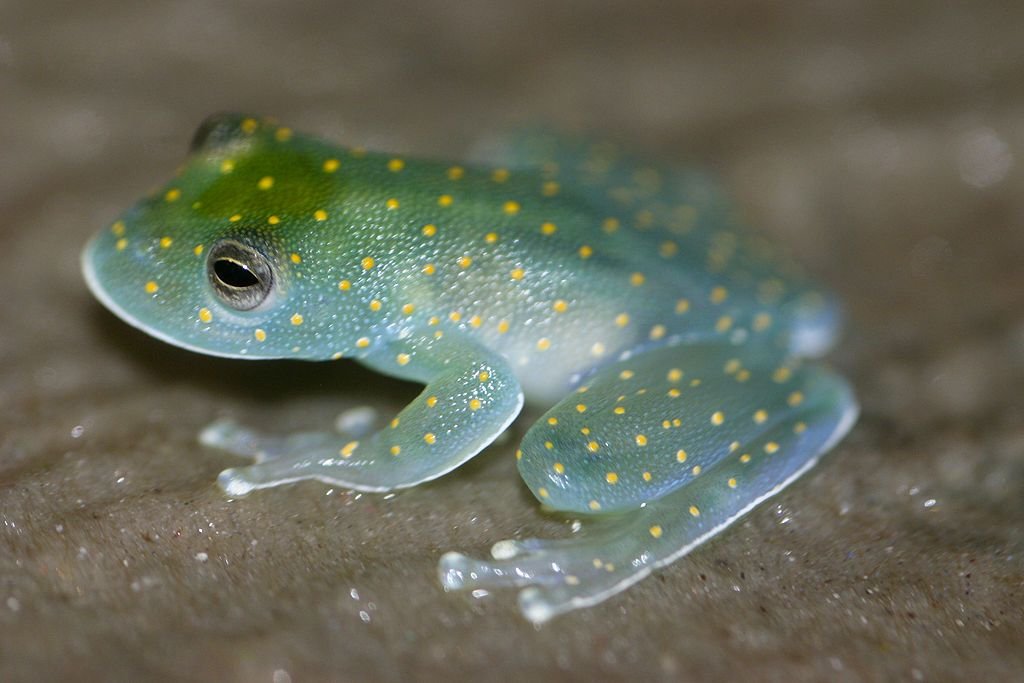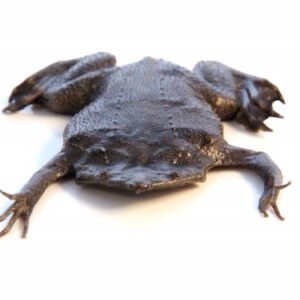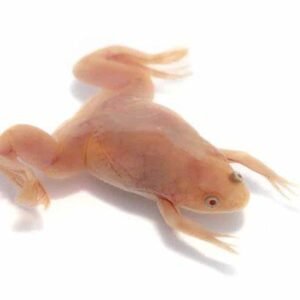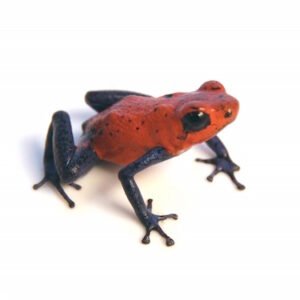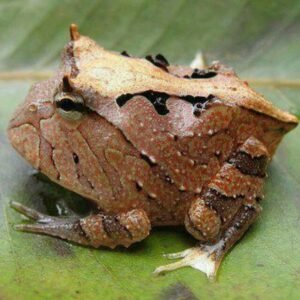The Enigmatic Glass Frog: Nature’s Transparent Marvel
Introduction to Glass Frogs
Glass frogs, belonging to the family Centrolenidae, are a fascinating group of amphibians known for their remarkable and distinctive translucent skin. This remarkable feature allows observers to view their internal organs, offering insight into their biological processes and adaptations to their environment. Found predominantly in the humid rainforests of Central and South America, glass frogs inhabit lowland and montane areas, often residing in close proximity to streams and rivers. Their preference for these lush ecosystems underscores the importance of a damp habitat for their reproductive and developmental stages.
One of the defining characteristics of glass frogs is their semi-transparent skin, which serves several potential purposes. The transparent exterior likely aids in camouflage, allowing these amphibians to blend into the leafy environment and evade predators. Additionally, the skin may perform physiological functions, assisting in respiration or moisture retention. This unique adaptation highlights the evolutionary ingenuity of glass frogs, showcasing how they have developed specialized traits to thrive in their ecological niches.
Historically, glass frogs were first described in the early 19th century, captivating the attention of biologists and herpetologists worldwide. Classification within the amphibian kingdom has revealed a diversity of species, each exhibiting minor variations in size, color, and habitat preferences. Currently, there are approximately 150 recognized species of glass frogs, ranging from the common glass frog (Hyalinobatrachium fleischmanni) to lesser-known relatives such as the moonlight frog (Hyalinobatrachium mittermeieri). This diversity highlights the adaptability and ecological significance of glass frogs, making them compelling subjects of study in the realm of herpetology.
Habitat and Distribution
The glass frog, known for its remarkable transparency, primarily inhabits humid tropical and subtropical regions of Central and South America. Species such as the Hyalinobatrachium fleischmanni, commonly found in these areas, are closely associated with specific environmental conditions that are essential for their survival. Typically, these frogs thrive in dense, moist forests where abundant vegetation provides both shelter and feeding opportunities.
The geographical distribution of glass frogs is largely determined by climatic factors, particularly temperature and humidity. These amphibians are often found near freshwater sources, including streams and rivers, which are crucial for their reproductive cycle. The presence of consistent moisture in their habitats facilitates their breeding, as glass frogs lay their eggs on the undersides of leaves above water bodies. When the eggs hatch, the tadpoles can directly enter the water, significantly enhancing their chances of survival.
Furthermore, the intricate ecosystems of these tropical environments play a vital role in the lifecycle of glass frogs. The flora and fauna within these regions provide not only food sources but also protection from predators. The leaf litter and surrounding plant life contribute to the humidity levels necessary for the health and development of these amphibians. As such, the health of glass frog populations serves as an indicator of the overall condition of their habitats.
In summary, the glass frog’s distribution is confined to specific humid environments in Central and South America, where ecological factors significantly affect their lifecycle and wellbeing. Understanding the nuanced relationship between these frogs and their habitats can shed light on their conservation needs, emphasizing the importance of preserving these unique ecosystems.
Behavior and Diet
The glass frog, known for its distinctive transparent skin, exhibits fascinating behavioral traits that reflect its unique adaptations in the wild. Primarily nocturnal, these amphibians are active during the night, utilizing the cover of darkness to engage in various activities such as foraging and mating. Their nocturnal habits enable them to evade many predators that are less active during these hours, thus increasing their survival rate. In groups, glass frogs often can be observed engaging in social behaviors, such as vocalizing to communicate with one another or displaying certain body language, which plays an essential role in their social interactions.
When it comes to their diet, glass frogs primarily feed on a variety of insects found in their tropical habitats. Their diet mainly consists of small insects such as ants, beetles, and flies. The ability of glass frogs to remain motionless helps them remain undetected by both prey and potential predators. This sit-and-wait approach is complemented by their keen eyesight, which allows them to spot movement in low light conditions effectively. Once an insect comes within striking distance, they utilize their quick reflexes to capture the prey with their sticky tongues.
Mating rituals of glass frogs are equally intriguing, marked by vocal calls that males use to attract females. These vocalizations can serve as an important social tool, facilitating not only mating but also establishing territory among males. During the breeding season, males will congregate near water sources, where females will lay their eggs. The males often engage in competitive displays to gain the attention of nearby females, showcasing a unique aspect of their social structure. In conclusion, the behavior and diet of glass frogs highlight their specialized adaptations that have evolved to thrive in their natural, often harsh environments, ensuring their continued survival in the wild.
Conservation Status and Threats
The conservation status of glass frogs varies among species, with several classified as threatened or endangered due to a combination of environmental challenges and human activities. These unique amphibians, known for their transparent skin, have become increasingly vulnerable as their habitats diminish. Deforestation, primarily driven by agricultural expansion, infrastructure development, and logging, significantly contributes to the loss of suitable living environments for glass frogs. As forests are cleared, these frogs lose not only their homes but also critical breeding sites that ensure their survival.
Climate change poses another serious threat to glass frogs, as it disrupts their delicate ecosystems. Changes in temperature and humidity can affect their reproductive cycles and food availability. Increased frequency of extreme weather events, such as heavy rainfall or prolonged drought periods, can result in the destruction of habitats and further decrease their populations. Pollution, particularly from agricultural runoff and industrial waste, also presents a serious risk. Contaminants can accumulate in their bodies, leading to health issues and a decline in reproductive success.
Fortunately, various conservation efforts are underway to protect glass frogs and their habitats. Conservation organizations work diligently to preserve critical habitats through the establishment of protected areas and the restoration of degraded ecosystems. Education campaigns aim to raise awareness about the importance of biodiversity and the need to safeguard these enchanting amphibians. Individuals can contribute to these initiatives by supporting eco-friendly products, reducing their carbon footprint, and volunteering for local conservation projects. By fostering sustainable practices and advocating for policies that prioritize environmental protection, individuals can play a crucial role in ensuring the future of glass frogs and maintaining the delicate balance of their ecosystems.

